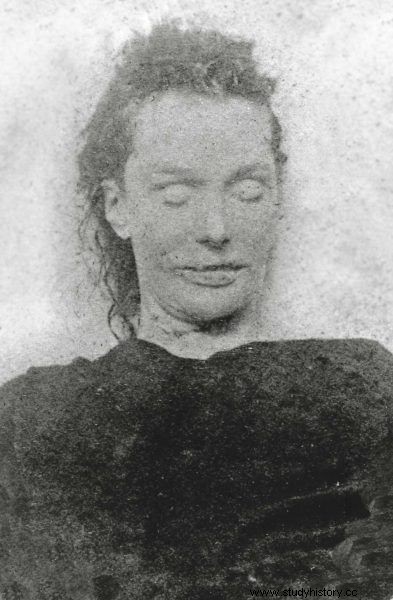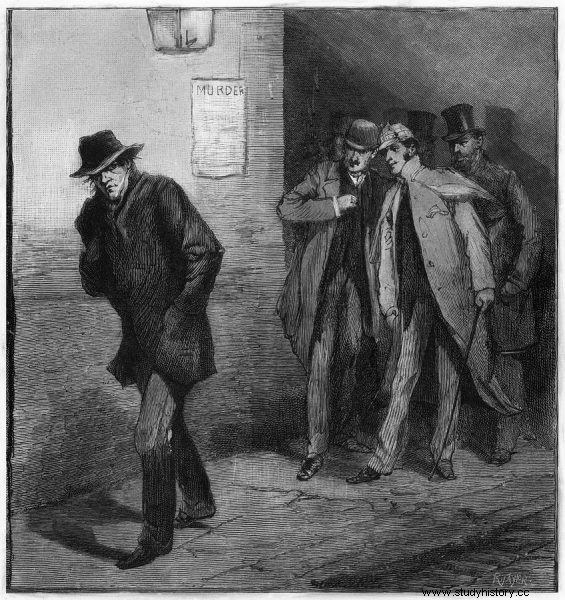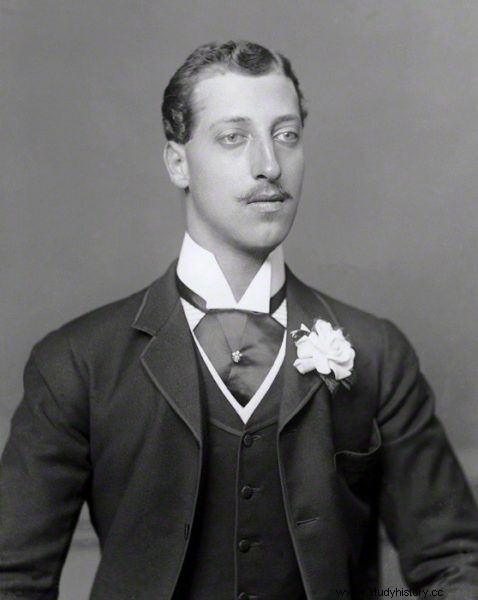In December 1970, more than 2,000 press titles around the world carried sensational information regarding the possible identity of Jack the Ripper, which had remained unknown since 1888, the time he committed the brutal murders. Journalists hypothesized that the criminal was a member of the British royal family - Albert Victor, Duke of Clarence and Avondale, grandson of Queen Victoria and son of Edward, Prince of Wales.
The story of Jack the Ripper began on Tuesday, April 3, 1888. Then the prostitute Emma Elizabeth Smith, who lives and works in the infamous London district of Whitechapel, was brutally attacked. When the woman was hospitalized, it turned out that a blunt object had been pushed into her vagina, which punctured her peritoneum, caused her inflammation and, consequently, quick death.
The last victim of the Ripper was the strangled prostitute Carrie Brown on April 24, 1891, nicknamed "Old Shakespeare" because, in a pointing state, the woman began to recite his sonnets. Her body was severely mutilated and the murder was committed in New York, so after a thorough analysis of the case, investigators ruled out a link between the Whitechapel murder and the US murder.
The criminal was supposed to kill 11 women. However, only 5 of them are considered "canonical victims" murdered from August 31 to November 9, 1888 . The fact that they died at the hand of one person was argued, among others, by a similar manner of mutilating a corpse - a slit throat and excised internal organs.
Failure of the investigation
Police launched a large-scale investigation on October 3, 1888, shortly after the killings of Elizabeth Stride and Catharine Eddows on the night of September 30. Women living in Whitechapel wrote a letter to Queen Victoria herself. The appeal was signed by 4,000 women who admitted "living in fear after horrific murders" and expressed sympathy for prostitutes - "sisters who went astray and had to live a sad life." The women also appealed to the queen to punish the offender quickly.

The victims were killed in an extremely brutal way. Fot / Public domain
The policemen worked literally 24 hours a day. Law enforcement officers visited the residents of the Whitechapel district, talked with local residents, summoned about 2,000 people for official interrogations and checked the alibis of 80 suspects. Special attention is paid to people with knowledge of anatomy, incl. doctors or butchers. The perpetrator was not arrested and his identity remained unknown.
One witness described a man seen with Mary Kelly murdered. He was a young man of medium height, well dressed, with brown hair and a thin mustache. A distinctive feature of its appearance was a high collar and long cuffs. From this description it could be concluded that the perpetrator was a person of high birth.
"Uncle Eddy collars and cuffs"
Even after the investigation was over, mystery lovers tried to unravel the mystery of Jack the Ripper. One of them was the famous British surgeon Thomas E. A. Stowell, who published an article on the identity of the famous criminal in the scientific journal "Criminologist". In this text, the scientist for the first time put forward the thesis that Prince Albert Wiktor was the Jack the Ripper. Stowell, born in 1885, based his arguments not only on his own research, but also on interviews with investigators in 1888.
Who was the then forgotten Albert Wiktor, known as Eddie? This prince born in 1864 is the eldest son of Edward, Prince of Wales, and his wife Alexandra. The young man was second in line to the British throne . Unfortunately, the boy was not successful in science, he was not interested in anything, his only hobby was shooting at birds. Eddie's parents said that if their son had no academic success, he might succeed in the military. Albert Wiktor found himself in an elite British unit, gained the sympathy of his colleagues, but the military service did not interest him. Moreover, the young man did not particularly develop.

One of the witnesses testified that the potential killer was "a young man of medium height, well dressed and with brown hair, a thin mustache" Fot / Domena Publiczna
Eddie, already an adult man, turned out to be a huge disappointment for his family and grandmother - Queen Victoria. He was apathetic, slow, lethargic, lazy and self-indulgent. He was not interested in any work. Though relatives did not say it aloud, Albert Wiktor was most likely slightly underdeveloped.
He had regular facial features, a thin mustache, soft brown hair, dark deer eyes. He inherited from his beautiful mother a gentle look and charm, although not her spontaneous temper. A characteristic feature of Eddie was his very long - even swan - neck, which he masked with high collars. His father used to say that children should call Albert Wiktor "Uncle Eddy Collars and Cuffs."
A wolf in sheep's clothing
At the time of the official investigation, there was no question of suspecting the son of the heir to the throne. Years later, after the death of Albert Victor and his parents, Dr. Gull, the doctor of the Prince of Wales and his family, began to share his suspicions about Jack the Ripper's identity. According to the doctor, Eddie suffered from severe mental disorders and a number of physical diseases due to his premature birth (the boy was born seven months pregnant). Eddie felt severe pain in his legs, he had periodic visual disturbances, and he often vomited. Sometimes his body was shaken by convulsions. Dr. Gull believed that Albert Wiktor suffered from worsening epilepsy, the symptoms of which began in childhood.
In February 1888, the doctor had a serious conversation with the Prince of Wales. He informed him that Albert Wiktor was suffering from syphilis as a result of his rude lifestyle. This untreated disease could have affected brain function (it was whispered that Eddie's death in January 1892 was due to syphilis, not the flu). Besides, as Queen Victoria's courtiers noted, Eddie was still mentally absent and depressed at the time of the murder of prostitutes in 1888. When his grandmother tried to talk to him, he did not understand what she was saying. The prince was also addicted to alcohol.

Albert Wiktor, Duke of Clarence and Avondale, grandson of Queen Victoria, accused of being Jack the Ripper because of his behavior.
Given Eddie's physical and mental condition, Dr. Gull concluded that he might have been acting inadequately and even having committed murder. In addition, the witness saw a man in Whitechapel in high-collared clothing, which was one of the hallmarks of Albert Wiktor! What could have brought the prince to an infamous neighborhood?
Well, Eddie regularly visited London's brothels and was said to have had no inhibitions in having intercourse with popular girls. Moreover, in 1889, he was involved in a homosexual playhouse scandal and his family went out of their way to silence the matter.
Present
When the press revealed the alleged identity of Jack the Ripper in 1970, historians denied the revelations. According to them, Albert Wiktor was in Scotland at the time of the murders.
However, not everyone believed in the prince's innocence because of his scandalous reputation. Even some directors of Jack the Ripper films who pointed to the prince as the perpetrator of the crimes were certain Eddie's guilt.
Bibliography:
- Pope-Hennesy J. Queen Mary. London, 1967
- Rumbelow D. The Complete Jack the Ripper. Harmondsworth, 1988
- Spiering F. Prince Jack. New York, 1980
